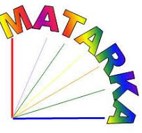Extenzív és intenzív húsmarha fajták legelésének a hatása szikes gyepek növényzetére
Absztrakt
A szikes gyepek megfelelő állapotban való fenntartása, hozamuk és sokféleségük megőrzése nem csak a természetvédelem, hanem a gazdálkodás szempontjából is fontos. Vizsgálatunkban összevetettük a kisebb intenzitású és az emelt állatlétszámú legeltetés illetve a legelés kizárás növényzetre gyakorolt hatásait nedves szikes mocsárréten és szárazabb szikes réten, a Hortobágyi Nemzeti Park területén. A vizsgálatok során összesen 40 kvadrátot elemeztünk extenzív húsmarhával (magyar szürke szarvasmarha) és vegyes genotípusú intenzív húsmarhával legeltetett és nem legeltetett mintaterületeken. Kimutattuk, hogy a legeltetés jelentősen befolyásolta a fajgazdagságot. A legnagyobb fajszámot a 3. évben a két éven át emelt állatlétszámmal legeltetett területeken, a legkisebbet a kontrollnál kaptuk. Az aljfüvek, és a pillangósok borítása jelentősen emelkedett a legelés intenzitás növekedésével. A legelésnek eltérő hatása volt az egyes élőhely típusokon. A szárazabb szikes réten nagyobb fajszámot találtunk, mint a szikes mocsáron. Továbbá megállapítottuk, hogy az extenzív húsmarhával való legeltetés alkalmas mind a szárazabb, mind a nedvesebb szikes élőhelyek kezelésére. Az intenzív húsmarha jóval alacsonyabb fajszámot tart fenn a mocsáron, mint a magyar szürke, viszont a szikes réten szintén alkalmasnak találtuk a szikes élőhelyek kezelésére.
Hivatkozások
Balázs, F. (1960): A gyepek botanikai és gazdasági értékelése. – Mezőgazdasági Kiadó, Budapest, 28 p.
Barcsák, Z. & Baskay, T. B. & Prieger, K. (1978): A gyepek gyomnövényei. – In: Lőrincz, J. (szerk.): Gyeptermesztés és hasznosítás. Mezőgazdasági Kiadó, Budapest, pp. 115–132.
Béri, B. & Vajna, T.–né & Czeglédi, L. (2004): A védett természeti területek legeltetése. – In: Nagy, G. & Lazányi, J. (szerk.): Gyepgazdálkodás. Gyepek az agrár – és vidékfejlesztési politikában. – DE ATC, Debrecen, pp. 50–59.
Deák, B. & Tölgyesi, Cs. & Kelemen, A. & Bátori, Z. & Gallé, R. & Bragina, T.M. &, Abil, Y.A. & Valkó, O. (2017): Vegetation of steppic cultural heritage sites in Kazakhstan – Effects of microhabitats and grazing intensity. – Plant Ecol. Divers. 10: 509–520. doi: https://doi.org/10.1080/17550874.2018.1430871
Deák, B. & Valkó, O. & Török, P. & Tóthmérész, B. (2014a): Solonetz meadow vegetation (Beckmannion eruciformis) in East–Hungary – An alliance driven by moisture and salinity. – Tuexenia 34: 187–203. doi: https://doi.org/10.14471/2014.34.004
Deák, B. & Valkó, O. & Alexander, C. & Mücke, W. & Kania, A. & Tamás, J. & Heilmeier, H. (2014b): Fine–scale vertical position as an indicator of vegetation in alkali grasslands – case study based on remotely sensed data. – Flora 209: 693–697. doi: https://doi.org/10.1016/j.flora.2014.09.005
Deák, B. & Valkó, O. & Kelemen, A. & Török, P. & Miglécz, T. & Ölvedi, T. & Lengyel, Sz. & Tóthmérész, B. (2011): Litter and graminoid biomass accumulation suppresses weedy forbs in grassland restoration. – Pl. Biosyst. 145: 730–737. doi: https://doi.org/10.1080/11263504.2011.601336
Gencsi, Z. (2005): Biogazdálkodás extenzív gyepeken. Gyepgazdálkodás. – Debrecen, pp. 97–101.
Kárpáti, B. & Sarudi, Cs. & Csorbai, A. & Marton, I. (2004): A magyar szürke szarvasmarha tartásának ökonómiai éskörnyezetgazdálkodási elemzése. – A. Agraria Kaposváriensis. 8: 33–49.
Kelemen, A. & Török, P. & Valkó, O. & Miglécz, T. & Tóthmérész, B. (2013): Mechanisms shaping plant biomass and species richness: plant strategies and litter effect in alkali and loess grasslands. – J. Veg. Sci. 24: 1195–1203. doi: https://doi.org/10.1111/jvs.12027
Király, G. (2009): Új magyar füvészkönyv. Magyarország hajtásos növényei. Határozókulcsok. – Aggteleki Nemzeti Park Igazgatóság, Jósvafő, 616 p.
Lukács, B. A.,Török, P., Kelemen, A., Várbíró, G., Radócz, Sz., Miglécz, T., Tóthmérész, B. & Valkó, O. (2015): Rainfall fluctuations and vegetation patterns in alkali grasslands. Self–organizing maps in vegetation analysis. – Tuexenia 35: 381–397. doi: https://doi.org/10.14471/2015.35.011
Miglécz, T., Tóthmérész, B., Valkó, O., Kelemen, A. & Török, P. (2013): Effects of litter on seedling establishment: an indoor experiment with short-lived Brassicaceae species. – Plant Ecol. 214: 189–193. doi: https://doi.org/10.1007/s11258-012-0158-6
Szabó, G., Zimmermann, Z., Bartha, S., Szentes, Sz., Sutyinszki, Zs. & Penksza, K. (2011): Botanikai, természetvédelmi és gyepgazdálkodási vizsgálatok Balaton – felvidéki szarvasmarha – legelőkön. – Tájökológiai Lapok 9: 437–446.
Szabó, J. (szerk.) (1974): Legelő és rétgazdálkodás. – Agrártudományi Egyetem Öntözéses–meliorációs Főiskolai Karának jegyzete. Szarvas, 161 p.
Tóth, E., Deák, B., Tóth, E., Deák, B.,Valkó, O., Kelemen, A., Miglécz, T., Tóthmérész, B. & Török, P. (2016): Livestock type is more crucial than grazing intensity: Traditional cattle and sheep grazing in short-grass steppes. – Land Degrad. Dev. 29:1–9. doi: https://doi.org/10.1002/ldr.2514
Török, P., Valkó, O., Deák, B., Kelemen, A., Tóth, E. & Tóthmérész B. (2016): Managing for composition or species diversity? – Pastoral and year-round grazing systems in alkali grasslands. – Agric. Ecosys. Environ. 234: 23–30 doi: https://doi.org/10.1016/j.agee.2016.01.010
Valkó, O., Török, P., Matus, G. & Tóthmérész, B. (2012): Is regular mowing the most appropriate and cost–effective management maintaining diversity and biomass of target forbs in mountain hay meadows? – Flora 207: 303–309. doi: https://doi.org/10.1016/j.flora.2012.02.003
Valkó, O., Tóthmérész, B., Kelemen, A., Simon, E., Miglécz, T., Lukács, B. & Török, P. (2014): Environmental factors driving vegetation and seed bank diversity in alkali grasslands. – Agric. Ecosys. Environ. 182: 80–87. doi: https://doi.org/10.1016/j.agee.2013.06.012
Net1: http://www.pannongyep.hu
Net2: http://www.grazinganimalsproject.org.uk/breed_profiles_handbook.html






